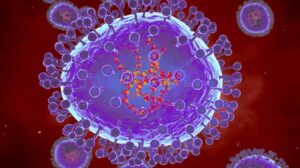Amid the Rising Concern: Understanding the Surge in Human Metapneumovirus (HMPV)
In recent months, healthcare providers and researchers have observed a concerning rise in cases of Human Metapneumovirus (HMPV). While HMPV may not yet be a household name, its increasing prevalence and impact on vulnerable populations warrant attention and action.
What is Human Metapneumovirus (HMPV)?
First identified in 2001, HMPV is a respiratory virus closely related to respiratory syncytial virus (RSV) and part of the Pneumoviridae family. It primarily causes respiratory illnesses ranging from mild cold-like symptoms to severe lower respiratory tract infections, including bronchitis and pneumonia.
The virus spreads through respiratory droplets, direct contact with infected individuals, or touching contaminated surfaces, making it highly transmissible in close-contact settings such as schools, daycares, and healthcare facilities.
Who is Most at Risk?
HMPV can infect people of all ages, but certain groups are more susceptible to severe illness. These include:
- Young children: Especially infants under the age of 2.
- Elderly individuals: Those aged 65 and older.
- Immunocompromised individuals: Patients undergoing treatments like chemotherapy or organ transplantation.
- People with chronic respiratory conditions: Such as asthma or chronic obstructive pulmonary disease (COPD).
Symptoms and Diagnosis
Symptoms of HMPV are similar to other respiratory viruses, making diagnosis challenging without specific laboratory testing. Common symptoms include:
- Fever
- Cough
- Nasal congestion
- Shortness of breath
- Fatigue
Severe cases may result in wheezing, difficulty breathing, and hypoxia, potentially requiring hospitalization.
Why is HMPV Rising?
Several factors may contribute to the observed increase in HMPV cases:
- Increased Surveillance and Awareness: Enhanced diagnostic capabilities have made it easier to identify HMPV, leading to more reported cases.
- Post-Pandemic Immunity Gaps: COVID-19 lockdowns and masking disrupted the circulation of many respiratory viruses, including HMPV. As restrictions eased, the population became more vulnerable to infections due to reduced exposure.
- Climate and Seasonal Variations: HMPV is more prevalent in late winter and spring, but unusual weather patterns might influence its spread.
How to Protect Yourself and Others
Preventing the spread of HMPV involves many of the same measures recommended for other respiratory viruses:
- Practice Good Hygiene: Wash hands frequently with soap and water for at least 20 seconds.
- Avoid Close Contact: Stay away from individuals who are sick, and avoid crowded places during peak seasons.
- Disinfect Surfaces: Clean high-touch surfaces regularly with disinfectants.
- Stay Home if Sick: Limit contact with others if you experience respiratory symptoms.
Is There a Treatment?
Currently, there is no specific antiviral treatment or vaccine for HMPV. Care focuses on relieving symptoms, such as using over-the-counter medications for fever and pain, staying hydrated, and resting. In severe cases, supportive care like oxygen therapy or mechanical ventilation may be necessary.
The Path Ahead
The rise of HMPV underscores the importance of continued investment in public health infrastructure, research, and education. Efforts to develop vaccines and antiviral treatments are underway, and raising awareness about the virus can help reduce its impact on vulnerable populations.
As the world continues to navigate the challenges of infectious diseases, understanding and addressing the risks posed by emerging pathogens like HMPV is crucial. By staying informed and proactive, we can better protect ourselves and our communities from its spread.
